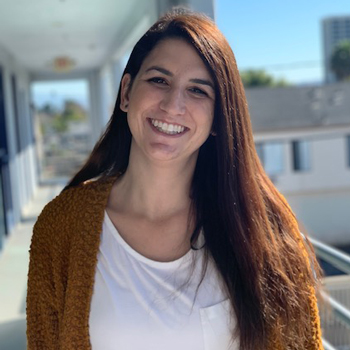Achalasia
Achalasia is a rare and debilitating disorder of the esophagus that blocks food from passing to the stomach. Because achalasia sufferers often regurgitate their meals, they are often misdiagnosed as having gastroesophageal reflux disease, or GERD.
Our esophageal disease experts at the UCI Health Chao Digestive Health Institute are highly experienced at correctly diagnosing this progressive disorder and providing effective treatment. UCI Health is the first in Orange County to offer what is now considered the gold standard treatment for achalasia — peroral endoscopic myotomy, or POEM.
To schedule a screening for achalasia, please call 888-717-4463 or complete an online appointment request form.
About achalasia
Achalasia affects an estimated one in 100,000 people and it is usually diagnosed in adults between 25 and 60 years of age. However, it can occur at any age, even childhood.
This progressive condition occurs when the esophagus — the muscular tube that connects the throat to the stomach — has difficulty moving food to the stomach. Normally, food and liquid are propelled down the esophagus with wave-like contractions that accompany each swallow.
This esophageal peristalsis, as it is called, concludes with the opening of the lower esophageal sphincter, a muscle that opens to allow food to pass into the stomach.
In achalasia sufferers, the ability of the esophagus to push food downward is impaired and the sphincter muscle fails to relax. Symptoms often begin with difficulty swallowing, but over time, the degenerative disorder can lead to:
- Distension of the esophagus
- Chest pain
- Heart burn
- Regurgitation
- Vomiting
- Weight loss
- Lung problems (from breathing food or liquids into airways)
Achalasia also may cause inflammation of the esophageal lining, which is a risk factor for developing esophageal cancer.
Diagnosis
Achalasia is often misdiagnosed because its symptoms are similar to those of other digestive disorders. The most common tests for achalasia are:
- X-rays of the upper digestive system — Patients are given a chalky liquid containing barium to coat the lining of the digestive tract, so X-rays can allow the physician to evaluate the esophagus, stomach and upper intestines for evidence of blockage.
- Upper endoscopy — An endoscope — a thin, flexible tube equipped with a light and camera — is inserted down the throat to examine the inside of the esophagus and stomach, and even detect a partial or complete blockage.
- Esophageal manometry — This test measures the contractions of the esophageal muscle during swallowing, as well as how effectively the lower esophageal sphincter relaxes or opens during swallowing.
- Endoflip® imaging probe — This endoscopic device is equipped with sensors that can measure the pressure within a distended esophagus, enabling a more accurate diagnosis of the type of achalasia.
Treatments
Achalasia may sometimes be treated with medication to help relax the lower esophageal sphincter (LES), but more active measures may be indicated, including such minimally invasive procedures as:
- Botox injections to help the lower esophageal muscles relax, a temporary procedure often used for older patients or those unable to withstand surgery. This approach requires repeat injections.
- Endoscopic balloon dilation, which involves inserting a balloon through the sphincter and inflating it to allow food and liquid to pass to the stomach more easily. This procedure may need to be repeated occasionally.
- Heller myotomy, a laparoscopic procedure that involves making tiny incisions in the abdominal area to cut the muscles of the lower esophageal sphincter, allowing food to pass. It usually is accompanied by a Nissen fundoplication procedure, which involves wrapping the upper part of the stomach around the sphincter to strengthen it.
- Peroral endoscopic myotomy, or POEM, also involves making small cuts in the muscles of the esophagus and lower esophageal sphincter to allow food to pass. However, the myotomy is done with an endoscope — a narrow, flexible tube equipped with a light, camera and cutting tool — inserted through the mouth and into the esophagus, without external abdominal incisions. Learn more about the POEM procedure.









